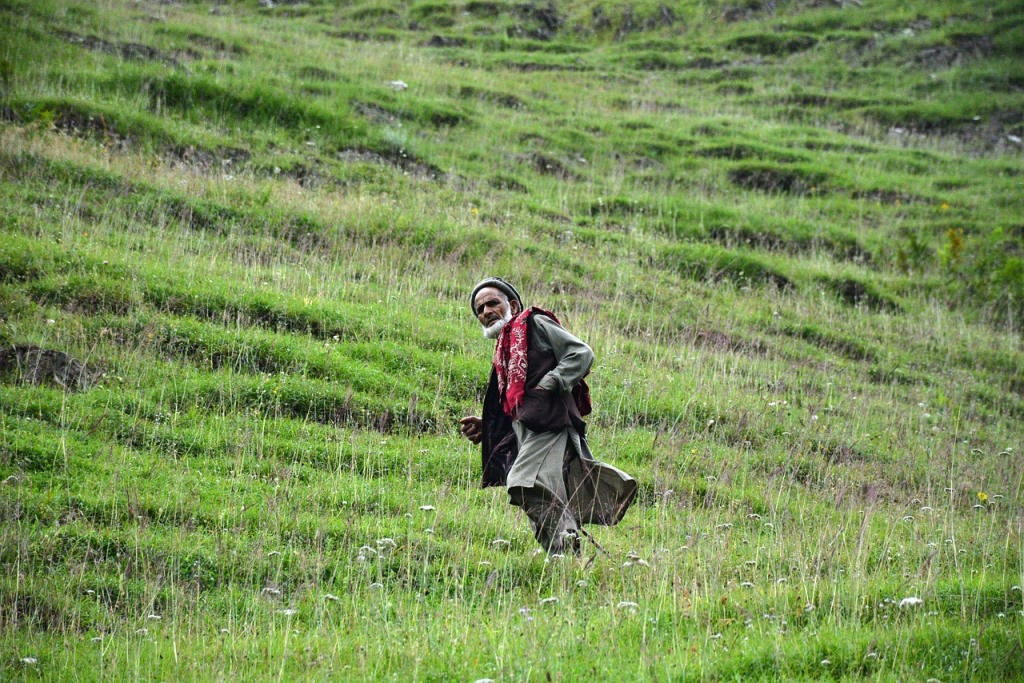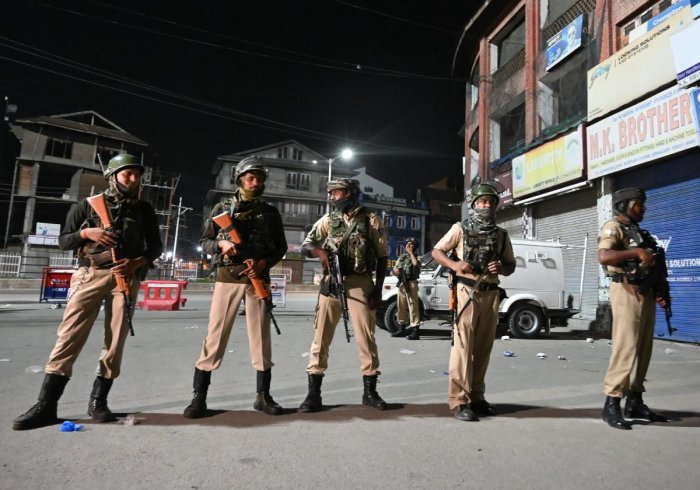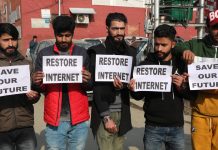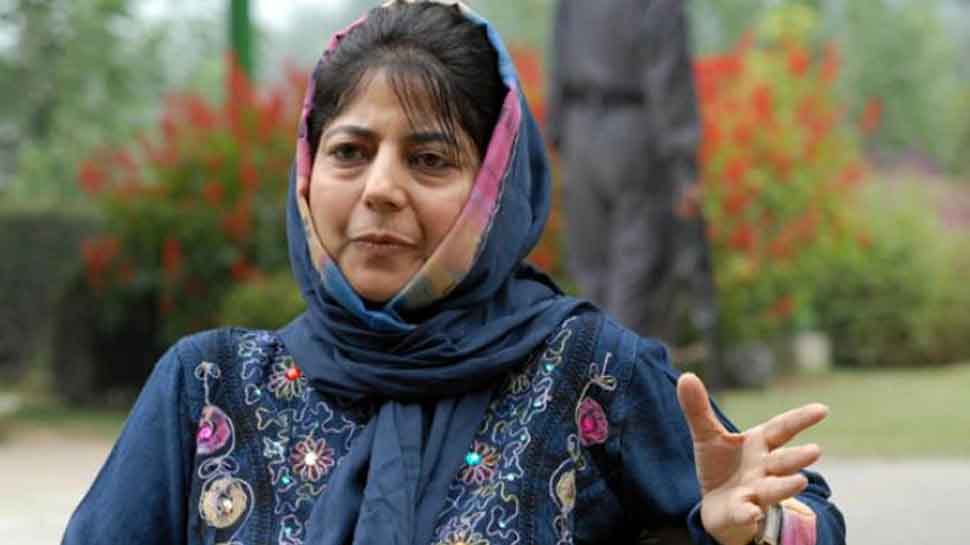
India, in its entirety, not encumbered by any linguistic notion of it, is in turmoil. Yes, India, a sovereign, socialist and needless to say a secular nation, is caught amidst scholars and politicians, barring no exception, reflecting words of each other and making sense of an India that they believe should be realised. India is caught in a post-modern revolution. It is caught amidst infinite interpretations of meaning of India, as a result, functioning on different principles of egalitarianism. Meaningless in itself, India is being used, in its varied state of affairs, in propositions that guarantees a sense. The state of affairs vary. You could see it in its wings.
The right wing has given India a new meaning, where India has transcended the constitutional era. The state of affairs in this India is the historicity on which the land was built. It is a very objective phenomenon in which the consent of the people within it had never been prominent. The state of affairs that give India a meaning in this proposition is anchored on a history that pictures victimisation of Hindus. Consider for example, the abrogation of Article 370 in Kashmir. Sure, as one would say, it attempted to free its people from the shackles of incessant violence, regardless of what the people wanted out of the violence. The lockdown in Kashmir has been a battle that, in its proposition, gave an idea of India, which in its masculinity, slyly represented as nationalism, attempts to achieve retribution for the exodus of the Kashmiri Pandits.
The newly formed act, the Citizenship Amendment Act, also is no stranger to this meaning of India. The Bangladesh Liberation War in 1971, under the symbol of Indo-Pakistan War, was fought on grounds of religious and ethnic persecution in the East Pakistan region(now, Bangladesh), inflicted by the military groups of West Pakistan. Religious minorities in East Pakistan, which were mostly Hindus, had to flee the region and take refuge in India. This refugees are still, in terms of law, “illegal migrants”. The government, being magnanimous as they are, is trying to redeem, in its course, such an action. The refugees are granted access to a fast-track citizenship. However, East Pakistan also inhabited a diaspora which was not particularly Urdu speaking Muslims. This other sect, on grounds of persecution, sought refuge in India, in due time, during the war. They are known as the Bengali Muslims; the Bengali speaking, followers of Islam — currently the largest minority in West Bengal and Assam. The act, despite its magnanimity, deprives them of getting a citizenship even when they flee persecution during the same war.
Thus the principle of egalitarianism here is based on a perception of inequality that is again, as I have said before, anchored on the history of India as the victimisation of Hindus. The nationalism here is not that which glorifies India, but it is that which glorifies the Hindus.
The left has also been a force actively participating in a dialogue on the idea of India. India, according to the left, has been an ideal. In an article for The New Republic, published on May 28 2019, Siddhartha Deb writes,
“[… The] Indian leftists, like American Leftists, have been trying to imitate the right-wingers rather than countering them.”
The statement converts to the fact that, although the left aims for egalitarianism and an elimination of majoritarian rule, it has only managed to bring out revolution counteracting the propositions of the right on the meaning of India, thus laying out new state of affairs that rests on denial of the meaning proposed by the right, and maintaining an idealisation of the constitution, hence separating themselves from the reforms necessary from the ground level to understand the historical implications and hostility dawned on minorities and refugees since the time of partition.
The left has always been in a vulnerable position. It has been a politics of inflicting self-victimhood. The left’s involvement in the anti-CAA movement did not have to do with the “question of secularity” in the act in itself, but it has to do with a kind of sectarian politics, where power is sought in rationalising of a particular minority sect; the movement giving representation to different types of victimhood — the dalits, the poor or the muslims. The left has been, since the beginning, looking for an identity — not that which resembles the minority, but one that has semblance with the “victimhood” of minorities. The egalitarian principle here is also limited, as is based on a different perception of inequality — the perception that views inequality from the standpoint of a particular victim.Prabhat Patnaik, in his article in the International Development Economics Associates on December 2017 points out,
“Systematically demanding reforms that people can respond to and that push against the boundaries of the existing order is the way forward towards a revolution, which requires therefore a continuous and intense engagement with the existing state of things within the order itself.A lack of such engagement, and a concentration either on fighting directly and exclusively for a revolution, or simply waiting for the opportune moment to launch a fight for a revolution but confining struggles in the meanwhile to routine trade union, peasant and other mass front struggles, is what I call missing the dialectics between reform and revolution.”
The left in this way has been on the edge, as vanguard of revolution, void of any engagement in the reforms necessary to protect and shape the conditions of minorities. It has fallen short of a meaningful dialogue — asking what it means for India to be a sovereign — what should be done about the increasing migration in the country — has failed in protecting the rights of people in Kashmir — has stopped short in enquiring the encounter of the rape accused in Hyderabad. It has also in many ways synced with the symphony of nationalism played by the right, trying not to hurt the majority sentiments.
The idea of India has garnered meaning this way from the state of affairs that signifies symbols of the rhetoric of Hindu Nationalism and minority victimhood. Truth in speech, in the present political discourse, has fallen prey, in a postmodern fashion, to a question of the meaning of India and its people.
It should also be noted that the country, in its post-secular climate, is battling between secular and counter-secular forces. This is a battle that has gone beyond the polarity of left and right, and has reached, via the conscience of people, to an assertion of truth. It becomes important to enquire about the origination of these counter-secular forces, in the market, in the present century, when science and rationality has taken precedence over religion. One cannot simply take a guess over the resurgence of religion in the society on an individual-level. However the cultural change, encoded in the supra-individual symbolic systems(institutions, customs, mythology, history, media, and more), hint towards elements of desecularization, or the resurgence of a particular sacred order. Vyacheslav Karpov, in his paper, Desecularization: A conceptual framework, writes on such a cultural shift,“The resilience of sacred orders sets limits to cultural modernity, and the entire field of culture becomes a battlefield between, in Berger’s terms, secularizing and counter-secularizing forces.”The societal influence, due to these symbolic systems, have seemed to shape the counter-secularism discourse in the country. The counter-secularism current is strong and India is moving towards a state of desecularization; the increasing integration of state and religion testifies to that.
Ayush Jain is The New Leam Staff Writer – based in Bangalore.










